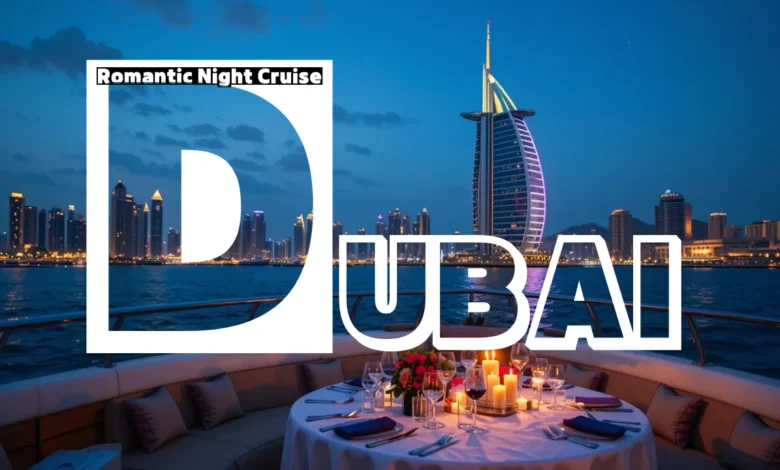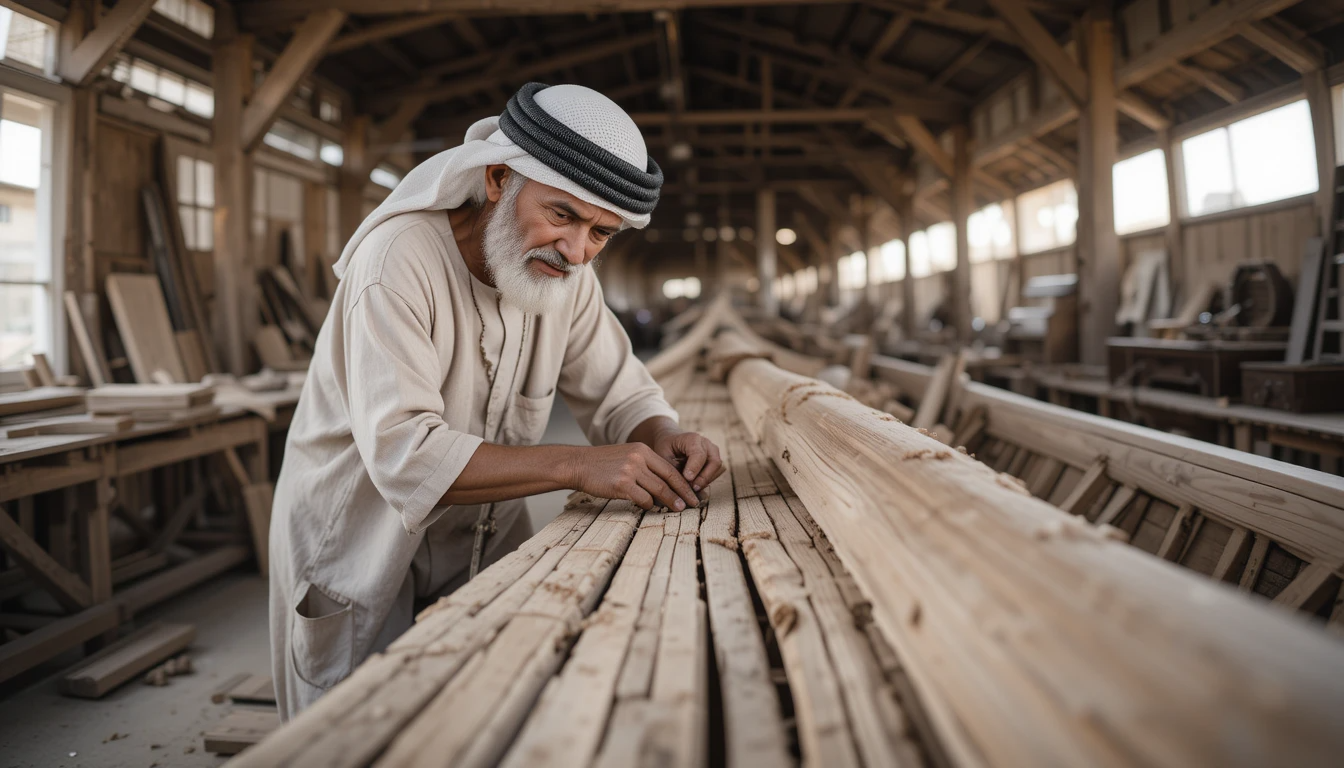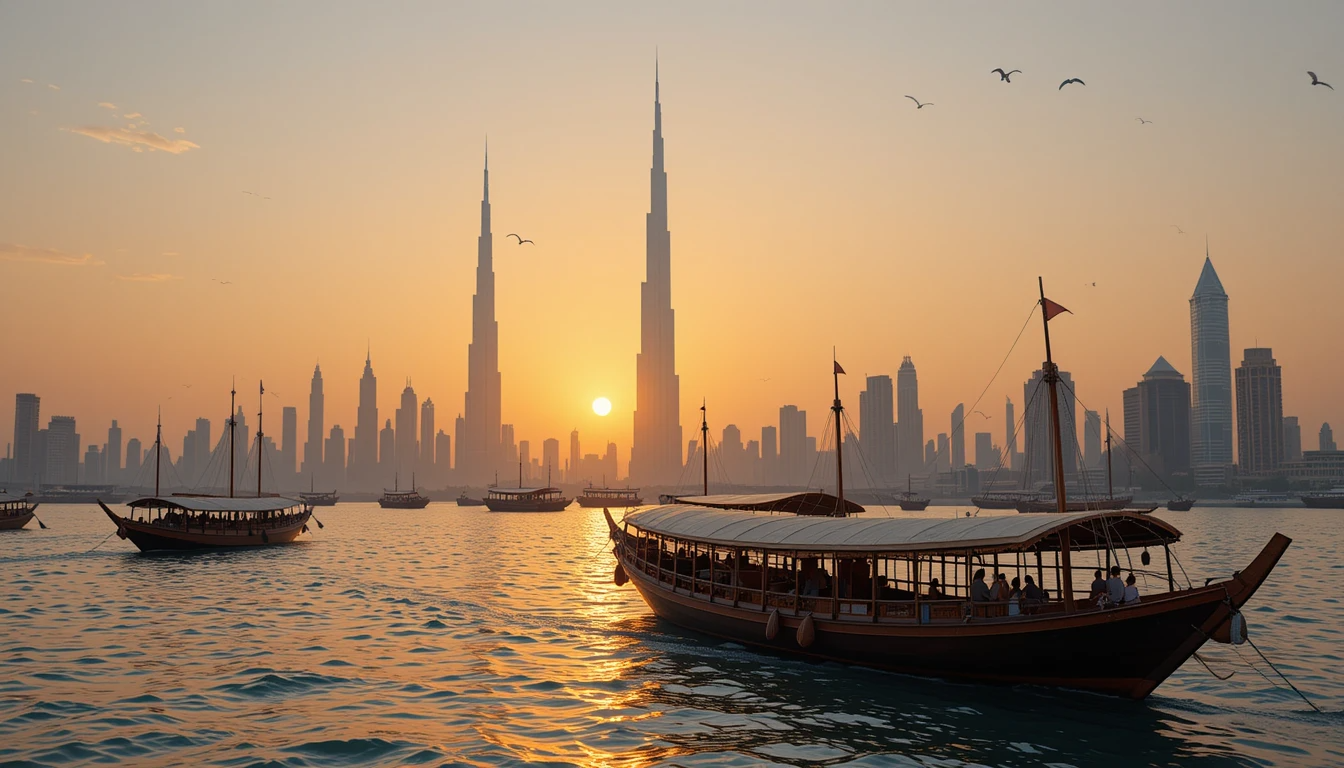🌅Why Is Dhow Important in the UAE?
A Personal Journey Through Emirati Maritime Heritage

Introduction: My First Encounter with the Iconic Dhow
When I first arrived in Dubai , one of the first things that caught my eye was the sight of a wooden dhow gliding across the calm turquoise waters of Creek Dubai . Its billowing white sails and elegant curves stood in stark contrast to the gleaming skyscrapers rising behind it.
I had heard of dhows before — vague mentions in history books or travel blogs — but standing on the pier, watching fishermen unload their catch from a centuries-old vessel, I realized there was something deeply symbolic about this humble boat.
“Why is dhow important in the UAE?” I asked my local guide, Ahmed. His answer opened up a world I had never truly considered — one where tradition and modernity coexist in harmony.
In this article, I’ll share what I learned — not just from books or museums, but from conversations with Emirati elders, visits to shipyards still building dhows by hand, and even a sunset cruise aboard one myself.
What Is a Dhow? A Timeless Symbol of the Arabian Gulf
A dhow is a traditional wooden sailing vessel that has been used for centuries across the Arabian Peninsula and East Africa. With its distinctive triangular lateen sails and handcrafted hulls made from teak or mangrove wood, the dhow is more than just a boat — it’s a living piece of UAE maritime heritage .
There are several types of dhows, each built for a specific purpose:
- Baghlah : A large dhow used historically for pearl diving and trade.
- Boom : Known for its wide beam and stability, ideal for cargo transport.
- Jalboot : Smaller and faster, often used for fishing and short trips.
- Kuwwari : A modernized version used for racing and tourism.
Each type reflects the ingenuity of Emirati shipbuilders who relied on stars and sea winds long before GPS and engines became common.
🏺 The Historical Significance: How Dhows Built the UAE
Before oil transformed the region into a global economic hub, the economy of the Trucial States (as the UAE was known before unification) was heavily dependent on pearl diving, fishing, and trade — all facilitated by dhows.
I visited the Al Seef Heritage Village in Dubai , where I saw replicas of old pearling camps and listened to stories from elderly men who once sailed these waters for months at a time.
“We lived on the dhow,” said one man, now in his 80s. “It gave us food, income, and connection to our neighbors in Oman, India, and beyond.”
Dhow trading routes connected the Arabian Gulf to places like India, Zanzibar, and Muscat , making them vital arteries of commerce and cultural exchange.
🛠️ Craftsmanship Alive: Visiting a Traditional Dhow Yard
One of the most unforgettable experiences during my trip was visiting the dhow yard in Dubai Creek , where master carpenters still build these boats using ancient techniques passed down through generations.
The scent of freshly cut wood filled the air as craftsmen shaped planks by hand, fastening them together with coconut fiber rope instead of nails. It was mesmerizing to watch — a process largely unchanged since the 18th century.
“Building a dhow takes about four months,” explained one craftsman. “But preserving our culture takes a lifetime.”
This dedication to craftsmanship is part of why the dhow remains so important in the UAE — it’s a tangible link to the past in an age of rapid modernization.

Traditional dhow builder working in a shipyard in Dubai, UAE.
🎭 Cultural Identity: The Dhow as a National Symbol
During the Sheikh Zayed Grand Mosque tour in Abu Dhabi , I noticed how frequently the dhow appears in Emirati art and architecture — carved into walls, painted on murals, and even displayed in official government buildings.
The dhow is featured on the UAE five-dirham coin , symbolizing the nation’s deep-rooted connection to the sea. It also appears in the mascot of Expo 2020 Dubai , reinforcing its relevance in both historical and contemporary contexts.
“The dhow reminds us of who we are,” said Fatima, a young Emirati university student. “It tells the world that we didn’t just come out of nowhere — we have a story, a journey.”
🚢 Modern Role: Tourism, Education & Recreation
Today, while dhows no longer dominate trade or pearl diving, they continue to play a crucial role in UAE tourism and education.
I joined a traditional dhow cruise in Dubai Marina , where families and tourists alike enjoy dinner under the stars while cruising past the city’s glittering skyline. It’s a beautiful fusion of old and new — the gentle sway of the dhow beneath towering skyscrapers.
Many schools and museums, such as the Dubai Museum and Sharjah Maritime Museum , use replica dhows to teach children about life before oil, navigation methods, and the importance of sustainable fishing practices.
🏁 Dhow Racing: A Thriving Tradition
To my surprise, dhow racing is still very much alive! During my visit, I attended the Umm Al Quwain Dhow Racing Festival , where dozens of dhows competed in a thrilling race across the open sea.
Locals gather in crowds, cheering for their favorite teams, while the roar of engines replaces the old wind-powered sails — a nod to modernization while keeping tradition intact.
“Racing keeps our connection to the sea alive,” said one competitor. “It’s more than sport — it’s pride.”
🌍 Sustainability and Environment: Lessons from the Past
As climate change and overfishing become global concerns, the traditional knowledge embedded in dhow culture offers valuable lessons.
Emiratis once practiced seasonal fishing , respected marine life, and built boats using renewable materials — principles that align closely with today’s eco-tourism and sustainable development goals .
Some environmental groups in the UAE now use dhows for marine research expeditions , blending ancient wisdom with modern science.
📚 Preserving the Legacy: Museums and Cultural Initiatives
To ensure future generations understand why the dhow is important in the UAE, many cities have established maritime museums and heritage centers .
The Sharjah Maritime Museum , for instance, showcases ancient maps, navigation tools, and full-scale dhow models. Meanwhile, the National Boat Building Institute trains young Emiratis in traditional shipbuilding techniques.
These efforts highlight the UAE’s commitment to preserving cultural heritage alongside its futuristic ambitions.
🧭 Final Thoughts: More Than Just a Boat
After weeks of exploring the UAE, meeting locals, and immersing myself in Emirati culture, I finally understood the deeper meaning behind the question:
“Why is dhow important in the UAE?”
Because it represents resilience, unity, identity, and pride . It is a reminder that even as the UAE continues to grow and innovate, it does so with one foot firmly rooted in its rich maritime past.
So, if you ever find yourself in the UAE, don’t just admire the dhow from afar — step aboard one. Let the breeze carry you across the same waters that once sustained entire communities. And listen — because the dhow still has stories to tell.

Dhow boats sailing on Dubai Creek at sunset, with modern skyline in the background.